View in other NatureServe Network Field Guides
NatureServe
Montana
Utah
Wyoming
Idaho
Wisconsin
British Columbia
South Carolina
Yukon
California
New York
Steven's Scandinavian Sedge - Carex stevenii
Other Names:
Carex norvegica ssp. stevenii
State Rank Reason (see State Rank above)
Rare in Montana, where it is currently known from a few scattered sites in mountainous areas across the southern half of the state. Additional data on population levels are needed. Survey of suitable habitats will likely document additional occurrences.
General Description
Steven's Norwegian sedge is a loose clump-forming perennial with flowering stems up to 30 cm tall arising from a slender short-creeping rootstock. Flat, stiff, erect leaves, 2-4 mm wide, are clustered along the bases of the stems, and dried leaves of the previous year are conspicuously retained. The flowering stems are triangular, much taller than the leaves, and are rough to the touch above. Three to five cylindical spikes are borned on short stalks along the top of the stem, subtended by a leaf-like bract. The perigynia are subtended by dark-colored scales with obtuse tips and transluscent margins. The terminal spike is bisexual with female flowers above male flowers and the lateral spikes are unisexual, with only female flowers. At maturity the perigynia are longer than the scales, about 2.5 mm long, elliptical shaped with a short toothed beak, greenish becoming brown with age, and smooth or with inconspicuous bumps on the surface. Each perigynium has 3 styles and a 3-sided achene.
Phenology
Fruiting in July-August.
Diagnostic Characteristics
Carex stevenii belongs to a group of related species that are distinguished by well developed basal leaves, more than one spike, the lateral spikes with only female flowers, perigynia lacking hairs, and pistils with 3 style branches. It is distinguished from other members of this group by having short cylindrical rather than long cylindrical or oblong spikes. It is distinguished from Carex norvegica subsp. inserrulata by having spikes on short flowering stalks, many male flowers at the base of the terminal spike, and a perigynium surface that is smooth or nearly so. A hand lens and technical key are needed for positive identification.
Species Range
Montana Range
Range Descriptions
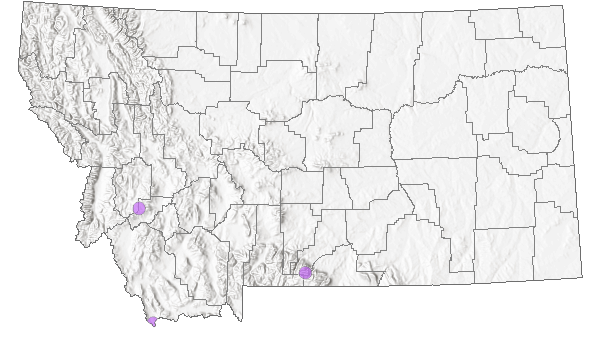
 Native
Native
Range Comments
ID, MT, WY, UT, CO and NM (Lesica et al. 2012. Manual of Montana Vascular Plants. BRIT Press. Fort Worth, TX).
Observations in Montana Natural Heritage Program Database
Number of Observations: 3
(Click on the following maps and charts to see full sized version)
Map Help and Descriptions
Relative Density
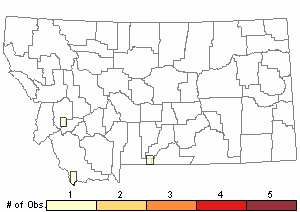
Recency
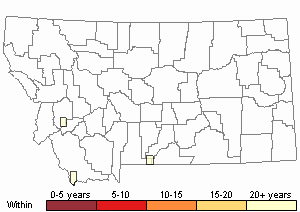

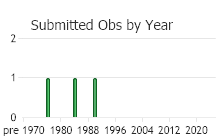
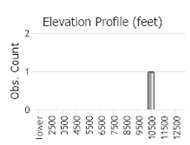 (Observations spanning multiple months or years are excluded from time charts)
(Observations spanning multiple months or years are excluded from time charts)
Habitat
Found along streams and in wet meadows in the montane and subalpine and growing in moist turf in the alpine.
Threats or Limiting Factors
STATE THREAT SCORE REASON
Threat impact not assigned because threats are not known (MTNHP Threat Assessment 2021).
References
- Literature Cited AboveLegend:
 View Online Publication
View Online Publication Lesica, P., M.T. Lavin, and P.F. Stickney. 2012. Manual of Montana Vascular Plants. Fort Worth, TX: BRIT Press. viii + 771 p.
Lesica, P., M.T. Lavin, and P.F. Stickney. 2012. Manual of Montana Vascular Plants. Fort Worth, TX: BRIT Press. viii + 771 p.
- Additional ReferencesLegend:
 View Online Publication
View Online Publication
Do you know of a citation we're missing? Lesica, P., M.T. Lavin, and P.F. Stickney. 2022. Manual of Montana Vascular Plants, Second Edition. Fort Worth, TX: BRIT Press. viii + 779 p.
Lesica, P., M.T. Lavin, and P.F. Stickney. 2022. Manual of Montana Vascular Plants, Second Edition. Fort Worth, TX: BRIT Press. viii + 779 p.
- Web Search Engines for Articles on "Steven's Scandinavian Sedge"





